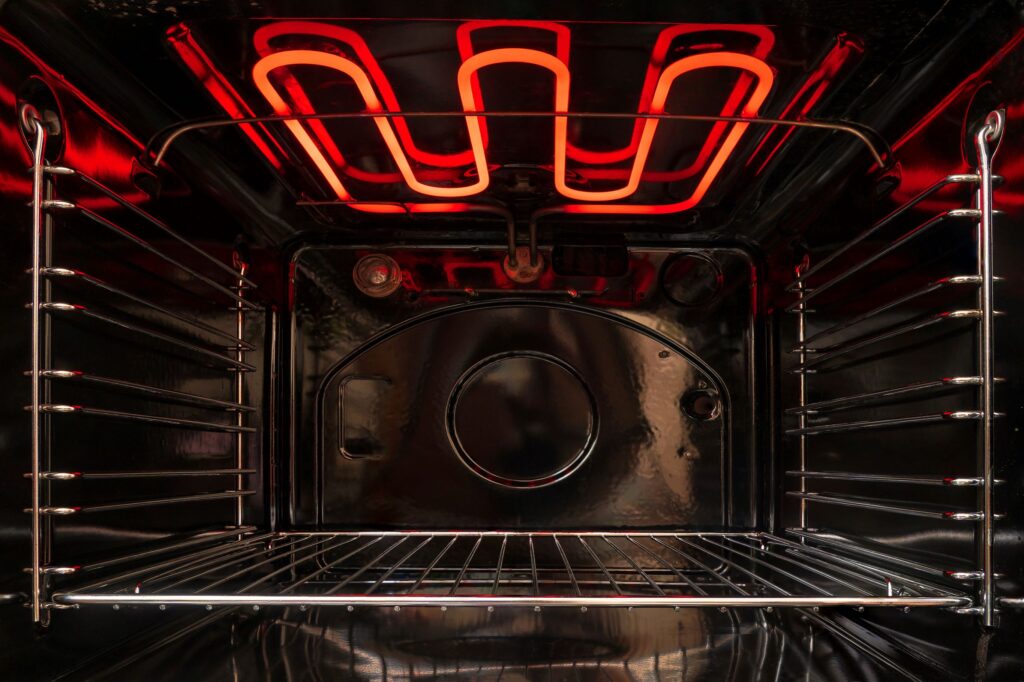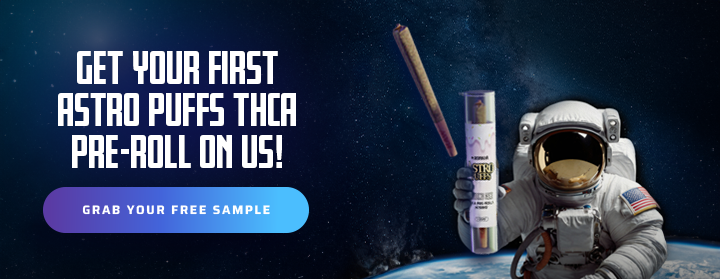THCA has stirred up a lot of questions within the cannabis industry. What is it? Does it get you high? How does it work? Is this like THC?
THCA offers accessibility to the same high you’ll get from THC and can be legally delivered right to your doorstep.
One of the key similarities amongst all THC consumption is the process of decarboxylation.
Decarboxylation: whew a mouthful – we know it! In this blog, we’re going to break down this fancy term and fill you in on how it applies to THCA without an entire chemistry lesson.
What is THCA?
Simply put, THCA, or Tetrahydrocannabinolic acid is the precursor to THC. This compound is found within the trichomes or powerhouses of the natural cannabis plant. THCA is converted into THC through the process of decarboxylation to induce a euphoric high and other therapeutic effects.
Read more about the uses and effects of THCA here!
What is Decarboxylation?
The natural cannabis plant matures and produces trichomes – the sticky and sparkly outgrowth that is trimmed when harvesting cannabinoids. These trichomes house high concentrations of THCA, naturally. This cannabinoid is non-psychoactive and in its raw state does not affect our neurotransmitters. In order to induce the high associated with THC, the chemical structure must be altered with the presence of heat. This can be achieved through smoking THCA with a lighter, through a vape with atomizers (the heat source within the vape), or through cooking/baking THCA at high temperatures for edible purposes.
You cannot get THC without THCA.
Once the heat is applied, the chemical structure of THCA will drop a carboxyl group, releasing carbon dioxide, and transforming it into THC. This process IS decarboxylation. Without decarboxylation, cannabinoids would not offer any of the psycho-active effects users are expecting.
🔥Fun fact: CBD also is not present in live hemp plants, its precursor CBDa is – and just like THCA, must undergo decarboxylation to unlock the highest potency of beneficial elements you get from CBD.
How to Decarboxylate THCA
If you can’t stand the heat then get out of the kitchen – or don’t enjoy the psychoactive effects of THCA. Heat is the MVP of decarboxylation. But how do you apply heat appropriately to reap the benefits?
Lighter: When smoking THCA, whether it’s a pre-roll, a bowl of flower, or any other form of sparking and inhaling, the flame source will heat THCA and allow for decarboxylation to take place.
Atomizer: THCA vapes are also hitting the market! Within the vape itself, is a mechanism that heats the product inside and emits vapor that you then inhale. Most vapes are designed to provide the perfect temperature needed to vaporize your THCA and in turn induce decarboxylation.
Cooking/Baking: Cooking or baking raw THCA at home can be a bit tricky, however it can be done! We recommend grinding the THCA flower down into smaller bits for a more evenly toasted batch. Distribute it evenly amongst parchment paper on a baking sheet and put it in the oven for about 30-40 minutes at 220 degrees Fahrenheit. After it has cooled, you can utilize it in any of your favorite yummy edible recipes.

🔥Here’s another fun fact: THCA already begins decarboxylation during the curing process. Decarboxylation may also occur if it is left in direct sunlight. However, at these stages and temperatures, only very small amounts of THC are unlocked. Therefore, further methods of heat application, as mentioned above, are needed to unlock the full potency and psycho-active properties of THC.
Check out our complete comparison guide on THCA vs THC!
What Happens if Decarboxylation Does Not Take Place?
The absence of decarboxylation when consuming cannabinoids is not necessarily a bad thing. In fact, THCA has undergone many studies providing evidence that there are many anti-inflammatory, antiemetic (anti-nausea), and even neuro-protective benefits from raw THCA.
However, if your goal is to achieve the euphoric and psycho-active properties of THC, decarboxylation is necessary in order for the cannabinoids to interact with your CB1 and CB2 receptors – and get you high!
Now You’re a Certified Scientist – Of Sorts
Who would’ve thought that you were performing a science experiment during your smoke sesh? Decarboxylation is the gateway from THCA to THC. Pretty cool if you ask us here at Moonwlkr! We love science and we love transparency. If you’re like us, you’ll want to take a peek at our lab tests and head over to our THCA collection.




